American Silver, Furniture, Folk Art, and Chinese Export Art Bring $10.44 Million
January 23rd, 2014
|
The silver brandywine bowl, one of only two known with the mark of Cornelius Vander Burch, New York, circa 1690, has six lobed panels and a domed center with an embossed and chased flower head. The two cast scroll handles have caryatids and beading, and the body is engraved on one side with a contemporary monogram “IAVRL” in a shield surrounded by flowers and crossed fronds, all beneath the monogram “D/WA.” The other side of the bowl is engraved with a seated figure of Ceres, beneath the monogram “WD.” The bowl measures 12¼" handle over handle and weighs 19 oz. 10 dwt. It sold to Tim Martin of S.J. Shrubsole for $317,000 (est. $150,000/250,000), underbid on the phone. At Sotheby’s, New York City, January 28, 1993, it had sold for $233,500. This is one of only 23 recorded examples of the form. Both the form and the function of these six-panel bowls derive from Dutch tradition. Brandywine bowls were filled with brandy and raisins; guests would draw liquor with a special silver drinking spoon and pass the bowl by the handles to the next guest. Such ceremonies occurred on the celebrations of feast days, marriages, and the Kindermaal, a Dutch custom where women gathered to celebrate the successful delivery of a newborn child. (The other known bowl of this form by Vander Burch sold at Christie’s, New York City, January 19, 2001, for $512,000.)
These silver chafing dishes carry the mark of John Coney, Boston, circa 1715. Each has three scroll legs on claw feet atop wooden balls, the body with molded rim and pierced border, the base and charcoal pan with similar decoration, the turned wooden handle with a baluster-form silver mount. They are engraved on the side with a crest and measure 12 1/8" long over handles; 39 oz. gross weight. Both dishes have minor repairs to scrolls near the handles, and the handle sockets have replaced pins; there are splits to two wood ball feet. They have good color, clear marks, and engraving in fine condition. These are rare as a pair. They sold to dealer Deanne Levison of Atlanta on behalf of clients for $233,000 (est. $120,000/180,000). At Sotheby’s New York City on January 1988, they sold for $137,500 to Christie’s Dean Failey for Eric Martin Wunsch.
Consigned by the Chipstone Foundation to benefit its acquisition fund, this is the Deshler family Chippendale carved mahogany side chair with the carving attributed to John Pollard (1740-1787) of Philadelphia, 1765-75 (at the height of his career). Pollard was the principal carver in the Randolph shop until he set up his own shop in 1773. The chair frame is numbered II on the top edge of the front seat rail and on the interior of the rear seat rail, with its original yellow pine slip-seat frame numbered II. The slip-seat frame has an 18th-century handwritten inscription in ink reading “Desh...” [Deshler], and the interior of the rear seat rail has a handwritten inscription in pencil reading “B. Smith.” It is 38½" high and sold for $725,000 (est. $200,000/500,000) to Peter Wunsch for the Wunsch Americana Foundation. It had sold at Christie’s on October 18, 1986, for $242,000 (then a record for a Philadelphia side chair). Asked why he bought it, Peter Wunsch said the foundation wanted to own the three best 18th-century chairs, “and now we do.”
This set of silver and enamel circus figures, each with the mark of Tiffany & Co., includes a lion cage, two lions, a tiger perched on a striped ball, a lion tamer, a ringmaster, a clown on stilts, and a woman attending three performing poodles on separate stools. The cage is 4¾" long. The total gross weight is 59 oz. 10 dwt. The 14 pieces sold on the phone for $21,250 (est. $8000/12,000). The cage and Uncle Sam clown were the prizes.
This 15¾" diameter, 59 oz. silver salver with the mark of Andrew Ellicott Warner of Baltimore, circa 1800, sold for $40,000 (est. $5000/7000) to dealer and advisor Clark Pearce of Massachusetts for a Baltimore collector, underbid by Tim Martin of S.J. Shrubsole. The circular salver has a molded rim and three tab feet, the field engraved with beading and foliage, the center engraved with a coat of arms and crest, and the reverse engraved with the name “L.E.H. Morris.” It was made for the Hollingsworth family of Baltimore, related to the Hollingsworth family of Philadelphia. American trays are rare, and there are apparently several collectors of Baltimore silver.
This Federal satinwood- and figured maple-veneered paint-decorated octagonal sewing box, attributed to Thomas Seymour (1771-1848), the paintwork initialed “JRP” for John Ritto Penniman (1782-1841), Boston, circa 1809, 3½" x 10 5/8" x 8", sold for $125,000 (est. $3000/5000) to a collector in the salesroom. Martin Wunsch had bought it from Israel Sack, Inc., New York City, in 1986.
From the Qianlong period, this set of four large Chinese export porcelain nodding head figures depicts a pair of officials wearing high black hats and blue robes enameled with butterflies, each holding a fan, and a pair of women wearing wide belts, their high topknots held by iron-red ornaments, all with finely modeled features, with separate nodding heads supported by slender weighted rods. The tallest is 17 3/8" high. They sold on the phone to a European dealer for $173,000 (est. $40,000/60,000). These figures had graced a grand baroque villa of an aristocratic family on the outskirts of Rome. The size of the figures, their fine modeling, and their composition as two couples set them apart from any published examples.
From the Kristina Barbara Johnson collection, a 30½" x 53" wool pictorial hooked rug from the early 20th century, inscribed “General Washington/ Noblest of Men/ His House His Horse His Cherry Tree & Him,” sold on the phone for $30,000 (est. $2000/4000). |
Christie’s, New York City
Photos courtesy Christie’s
Christie’s 2014 Americana Week sales totaled $10,444,625. The lots from various estates and sources sold in three sessions—American silver (January 23); American furniture, folk art, and prints (January 24); and Chinese export art (January 27).
Silver sold well, producing $1,737,875 of the total. There were 91 lots with just two lots unsold (98% sold by lot). Of the 162 lots of furniture and folk art offered on Friday, 136 sold (84% sold by lot). Chinese export art sold on Monday for a total of $3,034,750 with 130 of the 153 lots offered selling (85% by lot). For the past five years, Christie’s has been offering property collected by Eric Martin Wunsch, from his office, from his personal collection, from his foundation, and finally from his estate. Wunsch died in March 2013 at age 88. Andrew Holter, senior specialist of American furniture at Christie’s, said that altogether Christie’s has sold Wunsch material in 19 different sales in New York and London. As mentioned in M.A.D.’s January 2014 issue on p. 7-AW, John Hays of Christie’s said Wunsch had the ability to find truly exceptional works of art and was able to deploy strategies to acquire them. The MIT-trained engineer had formed one of the most revered collections of his time.
A dozen lots of Wunsch furniture in this recent January sale accounted for $2.2 million of the $5,416,400 total for furniture and folk art, and 28 lots of Wunsch silver added about $989,000 more. (Six of Wunsch’s Dutch pictures were offered by Christie’s in an old masters sale on January 29, and four of them sold for a total of $2,674,750. Four more old master paintings from his collection were offered at Sotheby’s.)
Dealer Tim Martin of S.J. Shrubsole, New York City, bought most of Martin Wunsch’s silver at this sale, about a third of it for clients and the rest for stock. He paid $317,000 (includes buyer’s premium) for the 17th-century brandywine bowl by New York silversmith Cornelius Vander Burch, circa 1690, one of only 23 recorded examples of the form. He said that Wunsch had bought the bowl from Shrubsole after it sold at Sotheby’s in January 1993 for $233,500. Martin also bought Wunsch’s pair of Paul Revere sauceboats for $161,000, saying “they were a bargain; others have brought considerably more.” In all, Martin bought 14 other lots of Colonial silver, all but one of them from the Wunsch collection, carving out his territory as the major dealer in 18th-century American silver. Colonial silver is a scarce commodity on the auction block.
Not all the Wunsch silver sold for more than Martin Wunsch paid for it. A silver alms dish, probably a baptismal basin, made by Jacob Hurd in Boston circa 1737 sold to Shrubsole for $18,750. Wunsch had bought it in June 1992 for $55,000.
Jeanne Sloane, Christie’s deputy chairman in charge of silver, said Christie’s estimated the sale conservatively, knowing that the silver market has fallen from its heights and that it is hard to gauge how far. Estimates were largely right on. Every lot except one tea set and the set of six Paul Revere tablespoons, not fresh to market, found buyers.
There was keen competition in the salesroom, on the phones, and on the Internet for works by Tiffany and Gorham and the Danish-born silversmith Peer Smed, who worked for Georg Jensen before coming to the United States in 1912 and setting up a studio in Brooklyn. Smed’s cocktail shaker in the form of a 15½" tall standing bear stood guard in the front of the salesroom during the sale and sold for $52,500 (est. $30,000/50,000).
On Friday, $5,416,400 was spent on American furniture and folk art, led by the consignment from the estate of Martin Wunsch, who was even more passionate about American furniture and silver than he was about Dutch old master paintings and European glass. Collectors, curators, and dealers gathered regularly at the Wunsches’ Gramercy Park apartment to study his furniture. Wunsch supported research by countless scholars and curators who became his consultants. He bought a lot of furniture, much of it made in New York, and established two foundations for the purpose—the Wunsch Foundation and the Wunsch Americana Foundation. He gave 700 pieces of New York furniture to the New York State Museum in Albany. The Wunsch Americana Foundation gives an annual award to further excellence in American decorative arts. Peter Wunsch, president of the Wunsch Americana Foundation, said he wants to focus interest in the field of collecting that gave his father so much pleasure. (See sidebar, p. 17-B.)
The top lot of Wunsch furniture was a Chippendale mahogany scallop-top tea table, probably from the shop of Benjamin Randolph (1737-1791), with carving possibly by Richard Butts of Philadelphia, circa 1770. It sold for $905,000 on one bid (est. $800,000/1,200,000).
Wunsch’s Philadelphia Queen Anne chair from the Coates family in Philadelphia with an estimate of $200,000/300,000 failed to sell. It had repairs at its crest, and collectors are very picky these days, finding any excuse not to bid, even on an early, well-proportioned Philadelphia side chair by one of the best craftsmen in the city, with an impressive provenance and in the wake of the sale of a similar chair from the Wunsch collection, in better condition, that brought $579,750 at Christie’s in September 2013. On the other hand, there were three bidders in pursuit of another Philadelphia walnut side chair with trifid feet, a simpler splat, graceful legs carved with shells, and a rich dark surface; it sold for $81,250 to dealer Philip Bradley of Downingtown, Pennsylvania.
The Wunsch family did some buying at the sale, spending $725,000 (est. $200,000/500,000) for one of the Philadelphia side chairs made for the Deshler family of Philadelphia, the carving attributed to John Pollard. It is unclear whether these chairs were made for David Deshler or his daughter Esther, but they were owned by Esther’s son-in-law John Morton. Four chairs, a card table, and an easy chair from the set are at the Philadelphia Museum of Art. In all, 11 pieces of furniture survive from the Deshler suite, including chairs, card tables, and a tea table, and most are in museum collections. Jonathan Prown, executive director and chief curator at the Chipstone Foundation, said Chipstone sold the chair because it has enough Philadelphia furniture to tell the story of the rococo carvers and is actively buying to fill holes in its collection. (Chipstone spent $567,750 for a Baltimore cylinder desk and bookcase at Christie’s in September 2013.)
Peter Wunsch’s younger son, Noah, stood at the back of the salesroom and did the bidding for his father. When asked why he bought the Deshler chair, Peter Wunsch said, “Now the Wunsch Americana Foundation owns the three best chairs in American art.” The other two chairs he was referring to were a roundabout chair, one of a pair ordered by John Brown from John Goddard, and a Philadelphia Queen Anne armchair that the Wunsch Americana Foundation has put on loan at the Metropolitan Museum of Art along with a Newport tea table attributed to John Goddard and a Newport card table signed and dated “John Townsend, Newport 1762.”
The Wunsch Americana Foundation also bought the Jarvis family Boston bombé chest of drawers with ball- and-claw feet for its low estimate and without competition for $485,000 (est. $400,000/600,000). Another bombé chest with bracket feet sold for $425,000 (est. $200,000/400,000) to Alan Miller for a client. (It is similar to a bombé chest that had sold at Christie’s for $827,500 in January 1998.) Bombé chests were more affordable this January.
So were New York card tables. Martin Wunsch’s mahogany serpentine-front five-legged New York card table sold for $173,000 (est. $150,000/250,000). It has three replaced knee returns. New York card tables have sold for much higher prices in recent years.
High chests sold well under their record highs. The Cox-Pickering family (Salem, Massachusetts) walnut high chest brought $75,000, and included in the lot was a fire bucket from the same family. At Northeast Auctions in August 1994 the high chest had sold for $143,000, and the fire bucket was offered in a separate lot and brought another $1000. A replaced middle molding, a minor flaw, dropped the price level in today’s market.
Furniture from legendary collections is also bringing less than it did at single-owner sales. For example, the serpentine chest of drawers with the label of William King, which had sold at Christie’s landmark Blair sale in January 2006 for $36,000, sold this time for $23,750 (est. $15,000/25,000). The very best examples seem to hold their value, but the challenge is finding the very good examples at a reasonable price, and the challenge for auctioneers is finding the right estimates.
Property from another estate offered at Christies this January, “Favorites from the collection of the late Kristina Barbara Johnson,” added significantly to the total. William Edmondson’s carved limestone Mother and Child sold for $263,000 to New York collector Jerry Lauren in the salesroom. Johnson’s large Grandma Moses snow scene, Old Covered Bridge,estimated at $300,000/700,000, failed to sell, and her fireboard attributed to Rufus Porter (est. $100,000/150,000) also remained unsold. Her 20th-century Outsider art sold well. Christie’s does not often sell works by 20th-century self-taught artists. A bright red painting by William Hawkins (1895-1990), Two Deer in a Fiery Forest, sold for $37,500 (est. $20,000/30,000) and a Bill Traylor Brown Mule brought the same price (est. $20,000/40,000). Thornton Dial’s Tiger sold for $32,500 (est. $8000/12,000).
Johnson lived in New Jersey and owned several pastel portraits by New Jersey artist Micah Williams that all sold over estimates. You will find two of them with captions among the illustrations. Prices for artworks by Williams were once higher but seem to coming back, thanks to the recent exhibition of Micah William’s portraits at the Monmouth County Historical Society, Freehold, New Jersey.
There was more spirited bidding at the successful sale of Chinese export art, with bidders from China in the salesroom, on the phones, and on the Internet. Christie’s head of department for Chinese export, Becky MacGuire, said mainland Chinese collectors began buying China trade porcelain about seven years ago and have kept on buying. One gentleman in the salesroom said he was buying for his museum in Nan-Chang (near Jingdezhen), where the porcelain was made and where some of the kilns are still in operation.
The top lot in the sale was a set of four large Chinese export porcelain elegant nodding head figures from the Qianlong period that sold on the phone to a European collector for $173,000 (est. $40,000/60,000). China trade porcelain made for the American market is always in demand. An Order of the Cincinnati plate, circa 1785, from George Washington’s service, is the cornerstone to any collection. The one in this sale from the collection of Martin Wunsch sold to an American collector on the phone for $87,500 (est. $20,000/30,000). An Order of the Cincinnati tea bowl and plate from a service made for Samuel Shaw, the supercargo on the Empress of China, the first American ship to reach Canton, also from the Wunsch estate, sold to a collector in the salesroom for $37,500 (est. $5000/8000), and a beaker vase with the arms of Vaughn impaling Hallowell, from the Wunsch consignment, sold on the phone for $8125 (est. $6000/9000).
A group of Famille Verte porcelain was appreciated by the Chinese bidders. For those bidding from China, it was the middle of the night. Becky MacGuire said she was thrilled to see bidders from around the globe compete for goods that left China centuries ago on sailing ships—and she found it fascinating to see a growing number of lots return to China. Unlike Americana, Chinese export art has a global market.
For more information, contact Christie’s at (212) 636-2000 or on line at (www.christies.com).
|
|
|
|
|
|
|
|
|
|
|
|
|
|
|
|
|
|
|
|
|
|
Eric M. Wunsch Award for Excellence in American Arts
|
Linda Kaufman graciously accepted the Wunsch award with a talk about her adventures in collecting. |
After an introduction and welcome by Christie’s John Hays, Peter Wunsch, president of the Wunsch Americana Foundation, explained the mission of the foundation. The mission is the preservation of 17th- and 18th-century Americana in all its forms, the furthering of scholarship in early American decorative arts, and the presentation of the Eric M. Wunsch Award for Excellence in the American Arts in order to bring like-minded individuals together. (The award ceremonies will alternate between Christie’s and Sotheby’s.)
The second annual Wunsch awards ceremony at Christie’s on Wednesday evening, January 22, was a two-part event. First came the announcement of the loan by the Wunsch family of four of Martin Wunsch’s favorite pieces of furniture to the Metropolitan Museum of Art. There followed a presenting of the Wunsch award to Linda Kaufman and her late husband, George M. Kaufman, and to Richard Jenrette.
Morrison Heckscher, chairman of the American Wing at the Metropolitan Museum of Art, said he was glad to exhibit the Philadelphia Queen Anne open armchair, the roundabout chair (one of a pair made by John Goddard for John Brown), a tea table attributed to John Goddard (one of eight serpentine scalloped-top Newport tables known), and a card table signed and dated “John Townsend 1762.”
Heckscher talked about the dinners and discussions that had been hosted by Martin and Ethel Wunsch in their apartment after January Americana auctions with collectors and curators. Peter Wunsch said the Wunsch Americana Foundation established the annual award to continue that tradition. “I am glad to see so many young people here tonight,” he said in front of more than 250 people gathered under the stairs and on the stairs in Christie’s lobby for the occasion.
Luke Beckerdite spoke about the Kaufmans’ role in the philanthropy of preservation and their significant gift to the American people. Over 200 examples of American furniture and decorative arts from the Kaufman collection have been promised to the National Gallery in Washington, D.C., where a portion of it is already on view. The Kaufman Americana Foundation has given grants to support scholarly books, articles, exhibitions, and research projects. It has contributed to the Charles F. Montgomery Curatorial Chair at Yale and to projects at the Chrysler Museum of Art, Norfolk, Virginia, the Museum of Early Southern Decorative Arts, and Winterthur. The Kaufmans also established the Kaufman Center for Heart Failure at the Cleveland (Ohio) Clinic.
 In accepting the award, Linda Kaufman reminisced about collecting. “We used to fly to New York from Norfolk on People Express for twenty-nine dollars round trip, making it possible to look over ‘the merchandise’ at Israel Sack, have lunch, and return home for dinner,” she said. She spoke of dinners with Martin and Ethel Wunsch where they met other collectors and curators and said that Martin Wunsch told them that Dutch pictures went with American furniture and introduced them to the dealer Otto Naumann. She said she is thrilled to have foreign visitors see American furniture at the National Gallery and that over seven million people have walked through the galleries in the first six months.
In accepting the award, Linda Kaufman reminisced about collecting. “We used to fly to New York from Norfolk on People Express for twenty-nine dollars round trip, making it possible to look over ‘the merchandise’ at Israel Sack, have lunch, and return home for dinner,” she said. She spoke of dinners with Martin and Ethel Wunsch where they met other collectors and curators and said that Martin Wunsch told them that Dutch pictures went with American furniture and introduced them to the dealer Otto Naumann. She said she is thrilled to have foreign visitors see American furniture at the National Gallery and that over seven million people have walked through the galleries in the first six months.
Metropolitan Museum of Art curator Peter M. Kenny introduced Margize Howell, executive director of the Classical American Homes Preservation Trust, who accepted the Wunsch award for Richard Jenrette, who did not make the trip from South Carolina. He is grieving the loss of his partner of 48 years, William L. Thompson, who helped him in his collecting, restoration projects, and interior design and cofounded the preservation trust. Kenny praised Jenrette for his preservation of historic houses and landscape and as an arbiter of taste. “For Richard Jenrette, the past is always present, and he lets you sit in his Duncan Phyfe chairs,” said Kenny. In the last 45 years, Jenrette has owned and restored 16 historic houses dating from the late 18th to the mid-19th century. He has kept six of them, including Edge-
water on the Hudson, Millford Plantation in Pinewood, South Carolina, and Estate Cane Garden in St. Croix, U.S. Virgin Islands. He established the Classical American Homes Preservation Trust to preserve and protect classical American architecture.
|
|
|
|
Originally published in the April 2014 issue of Maine Antique Digest. © 2014 Maine Antique Digest


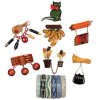




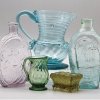







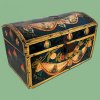
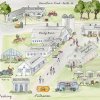

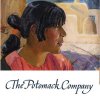

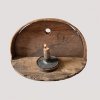





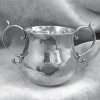



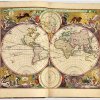


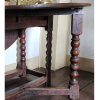



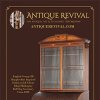

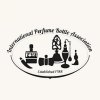

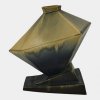
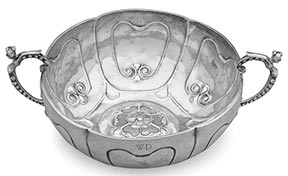
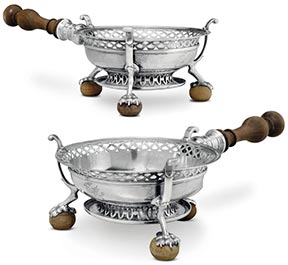
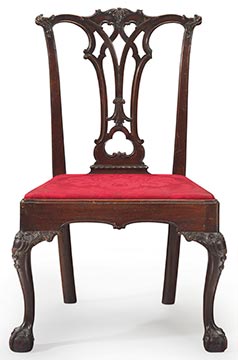
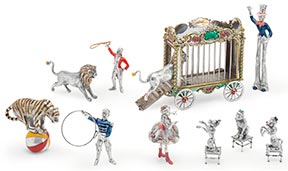
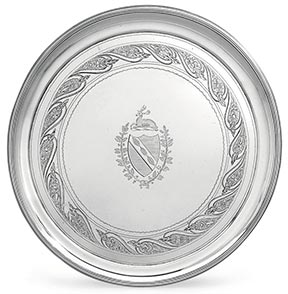
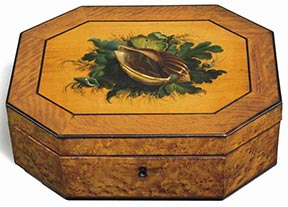
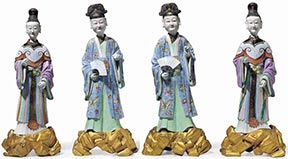
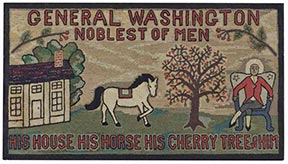
 This circa 1870 walnut No. 23 astronomical regulator has a silvered dial signed “E. Howard & Co. Makers Boston.” The 87½" x 23" x 15" regulator sold on the phone for $68,750 (est. $30,000/50,000), underbid in the salesroom by dealer John Delaney of West Townsend, Massachusetts.
This circa 1870 walnut No. 23 astronomical regulator has a silvered dial signed “E. Howard & Co. Makers Boston.” The 87½" x 23" x 15" regulator sold on the phone for $68,750 (est. $30,000/50,000), underbid in the salesroom by dealer John Delaney of West Townsend, Massachusetts.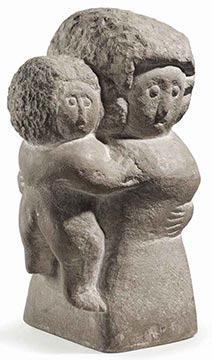 From the Kristina Barbara Johnson estate, Mother and Child, carved limestone, 11¼" high, by William Edmondson (1874-1951) is one of six sculptures of this subject by Edmondson, who was an African-American folk art sculptor. The son of slaves, he was born near Nashville, Tennessee, and worked as a stone mason and briefly for the WPA. He was discovered by a Vanderbilt University professor, who introduced him to Alfred and Elizabeth Starr, whose friend Louise Dahl-Wolfe photographed the artist in his yard. Those photographs were shown to Alfred Barr at the Museum of Modern Art in Manhattan, who mounted a show of Edmondson’s works in 1937. This one sold for $263,000 (est. $50,000/80,000) to New York collector Jerry Lauren, who outbid a lot of disappointed underbidders.
From the Kristina Barbara Johnson estate, Mother and Child, carved limestone, 11¼" high, by William Edmondson (1874-1951) is one of six sculptures of this subject by Edmondson, who was an African-American folk art sculptor. The son of slaves, he was born near Nashville, Tennessee, and worked as a stone mason and briefly for the WPA. He was discovered by a Vanderbilt University professor, who introduced him to Alfred and Elizabeth Starr, whose friend Louise Dahl-Wolfe photographed the artist in his yard. Those photographs were shown to Alfred Barr at the Museum of Modern Art in Manhattan, who mounted a show of Edmondson’s works in 1937. This one sold for $263,000 (est. $50,000/80,000) to New York collector Jerry Lauren, who outbid a lot of disappointed underbidders.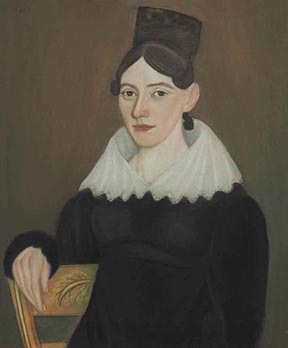 Portrait of Mrs. Martha Harned with a Tortoiseshell Comb by Micah Williams (1782-1837) in pastel on paper, 24½" x 20¼" (sight), sold on the phone for $27,500 (est. $4000/6000).
Portrait of Mrs. Martha Harned with a Tortoiseshell Comb by Micah Williams (1782-1837) in pastel on paper, 24½" x 20¼" (sight), sold on the phone for $27,500 (est. $4000/6000).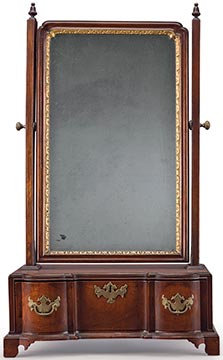 This Chippendale parcel-gilt mahogany block-front dressing glass, Boston, 1760-90, appears to retain its original brasses. The backboard has later tape inscribed “Russell Henry R. Dalton,” and the underside is incised “1772.” The 31¼" x 18½" x 11½" piece sold to a collector in the salesroom for $185,000 (est. $10,000/15,000). It is a record for a dressing glass. Rare in form and surviving in remarkable condition, this dressing glass is one of only a few blockfront examples known made in 18th-century Boston. The mirror is a reconfigured English looking glass. With a history of descent in the Russell family, the incised date, and its probable later ownership by Henry R. Dalton, this dressing mirror may have been made for Rebecca Russell (1747-1816) of Charlestown, who married James Tyng (1731-1775) in 1772. After his death, she married the Honorable John Lowell (1743-1802), a noted jurist and patriarch of the Lowell family of Boston.
This Chippendale parcel-gilt mahogany block-front dressing glass, Boston, 1760-90, appears to retain its original brasses. The backboard has later tape inscribed “Russell Henry R. Dalton,” and the underside is incised “1772.” The 31¼" x 18½" x 11½" piece sold to a collector in the salesroom for $185,000 (est. $10,000/15,000). It is a record for a dressing glass. Rare in form and surviving in remarkable condition, this dressing glass is one of only a few blockfront examples known made in 18th-century Boston. The mirror is a reconfigured English looking glass. With a history of descent in the Russell family, the incised date, and its probable later ownership by Henry R. Dalton, this dressing mirror may have been made for Rebecca Russell (1747-1816) of Charlestown, who married James Tyng (1731-1775) in 1772. After his death, she married the Honorable John Lowell (1743-1802), a noted jurist and patriarch of the Lowell family of Boston.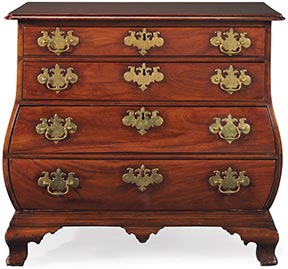 This Chippendale mahogany bombé chest of drawers, probably Boston, circa 1770, 33" x 36½" x 22¾", sold for $425,000 (est. $200,000/400,000) to advisor Alan Miller of Quakertown, Pennsylvania, for a client. It is closely related to about ten other chests that together represent the work of a school of cabinetmaking with ties to both Boston and Salem. Two related chests (sold by Christie’s) went for $827,500 in 1998 and $2,023,500 in January 2004. Subtle variations in the proportions and design include the curvature of the case sides. Some of the examples display a bulge beginning immediately at the top of the third drawer, including the present lot, whereas others have a more gradual flare originating within the range of the second drawer. At Northeast Auctions in May 1993, this one sold for $181,500 to dealer Wayne Pratt.
This Chippendale mahogany bombé chest of drawers, probably Boston, circa 1770, 33" x 36½" x 22¾", sold for $425,000 (est. $200,000/400,000) to advisor Alan Miller of Quakertown, Pennsylvania, for a client. It is closely related to about ten other chests that together represent the work of a school of cabinetmaking with ties to both Boston and Salem. Two related chests (sold by Christie’s) went for $827,500 in 1998 and $2,023,500 in January 2004. Subtle variations in the proportions and design include the curvature of the case sides. Some of the examples display a bulge beginning immediately at the top of the third drawer, including the present lot, whereas others have a more gradual flare originating within the range of the second drawer. At Northeast Auctions in May 1993, this one sold for $181,500 to dealer Wayne Pratt.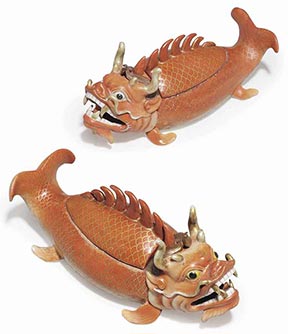 A pair of Qianlong period Chinese export porcelain tureens and covers in the form of dragon carps, each modeled swimming with upturned tail, its head with gilt tentacles and gilt horns enclosing crossed tufts of brown hair, a row of spiny fins on its back serving as a handle for the cover, 8¼" long, sold on the phone for $50,000 (est. $20,000/30,000).
A pair of Qianlong period Chinese export porcelain tureens and covers in the form of dragon carps, each modeled swimming with upturned tail, its head with gilt tentacles and gilt horns enclosing crossed tufts of brown hair, a row of spiny fins on its back serving as a handle for the cover, 8¼" long, sold on the phone for $50,000 (est. $20,000/30,000).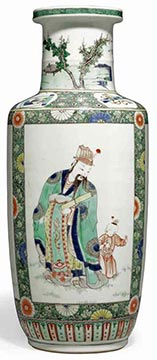 This Chinese Famille Verte porcelain Rouleau vase from the Kangxi period is 17 7/8" high and enameled with three panels, each depicting an immortal and his respective attributes. It sold in the salesroom for $68,750 (est. $10,000/15,000).
This Chinese Famille Verte porcelain Rouleau vase from the Kangxi period is 17 7/8" high and enameled with three panels, each depicting an immortal and his respective attributes. It sold in the salesroom for $68,750 (est. $10,000/15,000).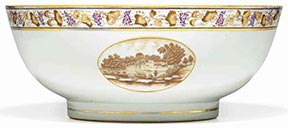 This large Chinese export porcelain punch bowl with a sepia view of Lemon Hill, a Federal House on the Schuylkill River in Philadelphia, sold on the phone for $16,250 (est. $4000/6000). It was cataloged as a European scene, but collectors recognized it as an American subject.
This large Chinese export porcelain punch bowl with a sepia view of Lemon Hill, a Federal House on the Schuylkill River in Philadelphia, sold on the phone for $16,250 (est. $4000/6000). It was cataloged as a European scene, but collectors recognized it as an American subject.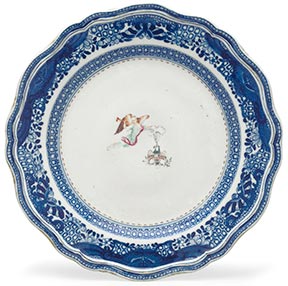 From the Wunsch collection, this Chinese export porcelain Order of the Cincinnati plate, circa 1785, shows a hovering angel blowing her trumpet as she suspends the badge of the Order of the Cincinnati. The molded scalloped rim is decorated in underglaze blue. The 9 5/8" diameter plate sold on the phone to a collector for $87,500 (est. $20,000/30,000). The catalog noted, “In the famed pattern purchased by Colonel ‘Light-Horse Harry’ Lee for George Washington in New York in 1786, 66 pieces of which are at the Henry Francis du Pont Winterthur Museum…Orders for Chinese porcelain featuring Cincinnati decoration were organized by founding member Major Samuel Shaw, supercargo on America’s first ship to Canton, the Empress of China, and former aide-de-camp to General Knox (and who later commissioned his own Cincinnati service)…Plates from this iconic service have been sold from other major American decorative arts collections, notably the Dietrich American Foundation [sold by Christie’s, January 28, 2013, at $98,500] and the Mrs. J. Insley Blair collection [Christie’s, January 21, 2006, $96,000].”
From the Wunsch collection, this Chinese export porcelain Order of the Cincinnati plate, circa 1785, shows a hovering angel blowing her trumpet as she suspends the badge of the Order of the Cincinnati. The molded scalloped rim is decorated in underglaze blue. The 9 5/8" diameter plate sold on the phone to a collector for $87,500 (est. $20,000/30,000). The catalog noted, “In the famed pattern purchased by Colonel ‘Light-Horse Harry’ Lee for George Washington in New York in 1786, 66 pieces of which are at the Henry Francis du Pont Winterthur Museum…Orders for Chinese porcelain featuring Cincinnati decoration were organized by founding member Major Samuel Shaw, supercargo on America’s first ship to Canton, the Empress of China, and former aide-de-camp to General Knox (and who later commissioned his own Cincinnati service)…Plates from this iconic service have been sold from other major American decorative arts collections, notably the Dietrich American Foundation [sold by Christie’s, January 28, 2013, at $98,500] and the Mrs. J. Insley Blair collection [Christie’s, January 21, 2006, $96,000].”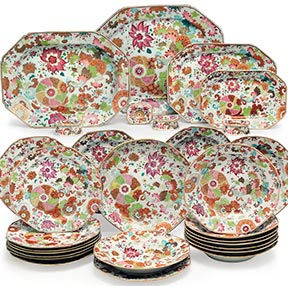 This is part of a Chinese export porcelain “tobacco leaf” type dinner service, circa 1785. Each piece is brightly enameled in a variation of the classic pattern with hibiscus blooms among leaves. The service sold for $52,500 (est. $15,000/25,000) on the phone to the European trade.
This is part of a Chinese export porcelain “tobacco leaf” type dinner service, circa 1785. Each piece is brightly enameled in a variation of the classic pattern with hibiscus blooms among leaves. The service sold for $52,500 (est. $15,000/25,000) on the phone to the European trade.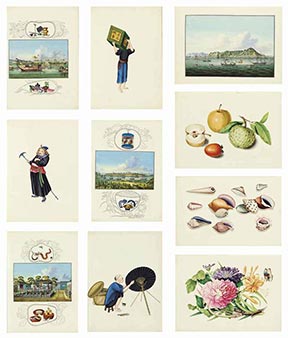 These are some of the 80 leaves of a bound China trade album by Lamqua. The 19th-century album of ink and colors on paper has a frontispiece with a printed Lamqua label above a script inscription in black ink, “A mon cher frère Raimond Brascassai/ Canton 15 Avril 1860/ G Brascassai.” The first leaf is a finely rendered portrait of a mandarin with script pencil notation below, “Lamqua/ certifié ressembler par A.B.” There are topographical and port views, images of silk production, boys at play, shells, fruit, birds, boats, court figures, tradesmen, birds, butterflies and insects, furniture, lanterns, and firecrackers. The 12" x 9" album, bound in Chinese silk with marbled endpapers, sold for $81,250 (est. $20,000/30,000) to the U.K. trade.
These are some of the 80 leaves of a bound China trade album by Lamqua. The 19th-century album of ink and colors on paper has a frontispiece with a printed Lamqua label above a script inscription in black ink, “A mon cher frère Raimond Brascassai/ Canton 15 Avril 1860/ G Brascassai.” The first leaf is a finely rendered portrait of a mandarin with script pencil notation below, “Lamqua/ certifié ressembler par A.B.” There are topographical and port views, images of silk production, boys at play, shells, fruit, birds, boats, court figures, tradesmen, birds, butterflies and insects, furniture, lanterns, and firecrackers. The 12" x 9" album, bound in Chinese silk with marbled endpapers, sold for $81,250 (est. $20,000/30,000) to the U.K. trade.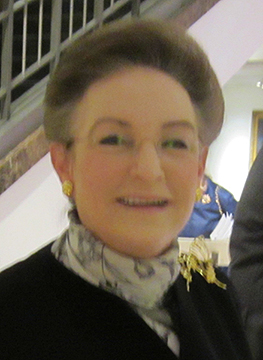
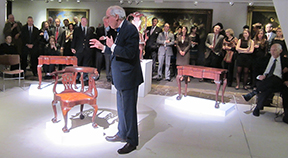 Morrison Heckscher, the
Morrison Heckscher, the 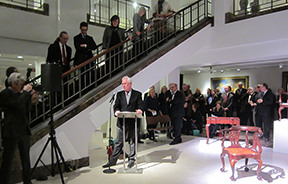 Peter Kenny is shown talking about Richard Jenrette’s contribution to the preservation of Classical America.
Peter Kenny is shown talking about Richard Jenrette’s contribution to the preservation of Classical America.



